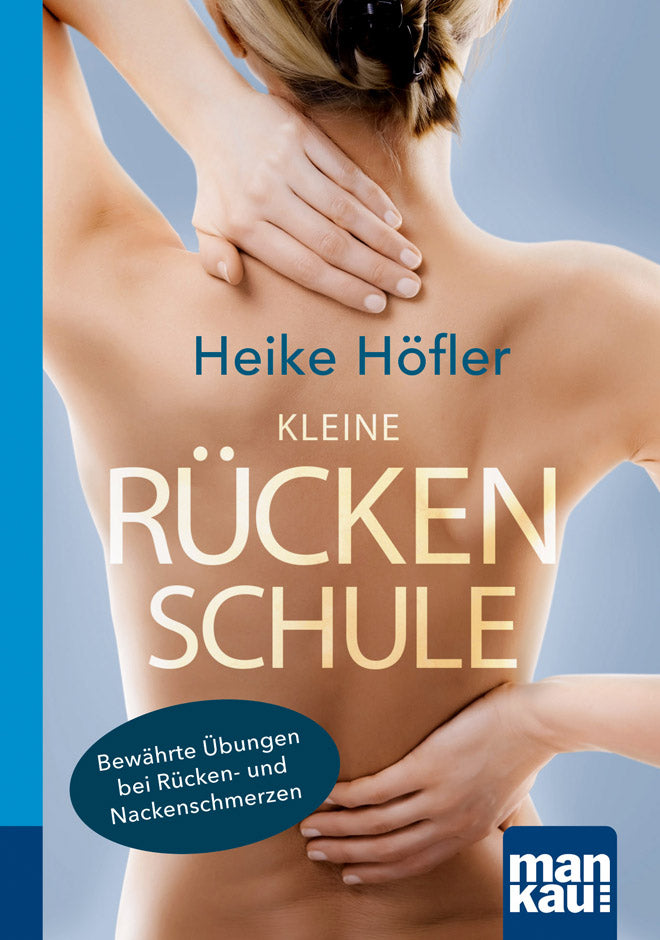
Active against back pain
Active against back pain
Regular exercise keeps muscles, ligaments, tendons and fascia healthy and elastic
The reason for many back pains is muscles that are too weak, shortened and therefore inelastic. “A Little Back School” by Heike Höfler presents tried and tested exercises that protect against wear and tear and pain.
Couch Potato Generation
We sit a lot, often staying in the same position for hours at the computer, and even our leisure activities are often spent motionless or in a one-sided posture. For Heike Höfler, a sports and gymnastics teacher known from radio and TV, we therefore have no choice but to consciously train and specifically build up our muscles: "In the age of technology and automation, in which sitting at the computer for hours and inactive leisure activities such as watching TV and playing Xbox are the order of the day, back problems can only be avoided if we learn to be aware of our posture, to change it again and again and not to let it freeze in one position." In her compact guide "A Little Back School", she advocates responsible treatment of the back and lots of varied exercise that is fun.
Muscle training for a strong back
The deep and superficial back muscles are primarily responsible for the stability and mobility of the spine. The abdominal muscles provide support here. Together they give the spine the necessary support and flexibility. Due to jobs that involve little movement and are often unfriendly to posture, these muscles are usually far too weak and tend to atrophy. In addition to the back and abdominal muscles, the gluteal muscles, the back of the thighs and the pelvic floor muscles also ideally hold the pelvis in a favorable and stable position.
The cause of back pain is usually tense back muscles and fascia, as well as shortened, inelastic tendons. But psychological factors are often to blame: stress and psychological problems or fears often manifest themselves in muscle tension. That is why mindfulness, relaxation and posture exercises are essential for the treatment and prevention of chronic back pain in particular. A consistently upright, stable posture - with well-strengthened back muscles and ligaments that are not overstretched but firm, as well as well-mobile vertebrae - is the best guarantee for a back without premature signs of wear and tear and pain.
Exercise programs for varied movement
The most important rule of the little back school and for a back-friendly everyday life is: keep moving - active and dynamic. That's why a variety of movements in all possible directions and sometimes even to the limit of movement are sensible and important. "Variety is the best thing you can do for your body, including its joints, muscles and fascia," says the experienced trainer.
It is not advisable to stay in the same position for many hours, including the ideal sitting position. Instead, you should try to return to this position every now and then and do exercises from this position. But overall, it is important to move, change positions and not to remain stiff in any position for long.
The eleven exercise programs presented in this guide, which can be carried out even in the smallest of spaces or in the office, are intended to identify persistent incorrect postures and reprogram them into anatomically correct, healthy ones, so that muscles, tendons, ligaments, intervertebral discs and fascia are not constantly compressed, tense and worn out unfavorably.
Book tip:
Heike Höfler: Little back school. Compact guide. Tried and tested exercises for back and neck pain. Mankau Verlag, 1st edition October 2016, paperback, color, 126 pages, 7.99 euros (D) / 8.20 euros (A), ISBN 978-3-86374-329-1.
Link recommendations:
More information about the compact guide "Little Back School"
To the reading sample in PDF format
More about the author Heike Höfler
To the publisher's Internet forum











